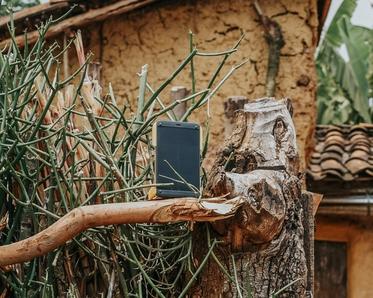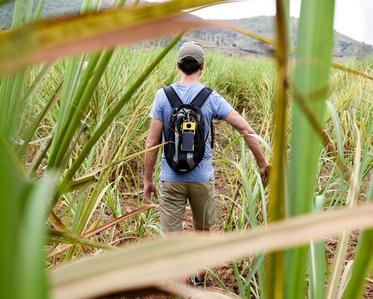How does a flashlight without batteries work?
A flashlight without batteries? That means no charging cables, and never having to change the battery. Nowadays, there are lots of different options available. You've probably come across some of them before. The best-known are flashlights that you have to shake, squeeze or wind. But how do these systems actually work? And are they really as useful as we might think?
What is a flashlight with no batteries?
It's actually a very simple concept. A flashlight with no battery is literally a flashlight without a battery. But if that's the case, where does it get its energy from? It works in exactly the same way as a dynamo bike light. By shaking, squeezing or winding the flashlight, you give the built-in dynamo or magnet the induction voltage it needs. That sounds ideal, but is it actually?
Opinions vary considerably. Of course, it's a big advantage that you never have an empty battery, but it takes a lot of energy to generate enough voltage in the dynamo each time you want to use the light. At the start, the flashlight needs to be constantly moving. Once you've finally built up enough voltage, the light will shine constantly, but this is also for a relatively short period. A lot of people think this is too much effort for a small amount of light.
Solar powered flashlights
It is easy to forget about the alternative solution. Solar energy: an eternal energy source which is available to everyone. The technology for this has come a really long way, to the point where solar energy has actually become almost commonplace. We'd like to take a moment to explain why flashlights without batteries are the future.
The average solar-energy flashlight only requires five to eight hours of sun. After the flashlight has fully charged, it then provides up to 40 hours of light. Ultimately, this means you can use the flashlight for general purposes, not just in emergencies. Take your flashlight with you when you go camping, or on a hike to watch the sunrise. The possibilities are endless! Solar energy doesn't just mean that no standard batteries are used in the flashlight. All the energy absorbed by the solar panel is converted into electricity, which is then stored in a lithium polymer power pack. This means that the collected energy can be used later on.
How do you charge a solar powered flashlight?
The closer the flashlight is to the sun, the faster it will charge. In Europe, this means you might need some patience! The solar panels work based on UV light, so the charging time is highly dependent on the weather. But there are ways to get the most out of the sun. Ensure that the solar panel is in direct sunlight and that there are no shadows. It also helps if you turn the solar panel around through the day to follow the sun.
If you want to charge the flashlight indoors, bear in mind that the UV rays get blocked by the glass of your window, so the solar panels receive less light. Make sure to put the flashlight outside on sunny days. Positioning the solar panels at an angle of 90 degrees will give you the optimum charging speed.
Conclusion
Even though a flashlight without batteries will never be truly empty, a solar powered flashlight is still more practical. Simply put the lamp in the sun for a while and it will then be ready to use. This requires a lot less effort on your part, you're using a clean energy source, and the lamp can be used in many more situations. Also, in an emergency, you won't have to build up the voltage first before using the light. Thanks to the power pack, the energy is already available. Super practical!









